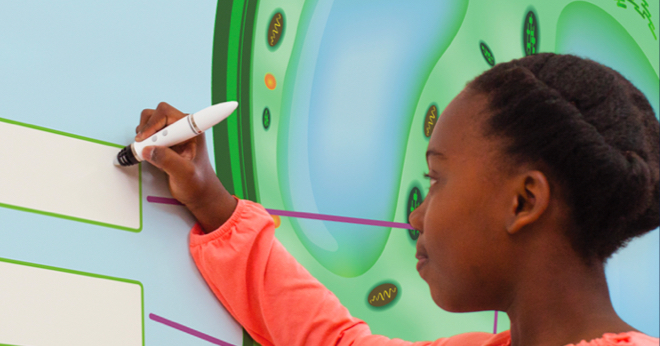This was certainly my experience! But for my daughter and many children like her, technology played an influential role in their early development. In fact, it is not uncommon to see toddlers walking using smartphones to watch videos or play games. As we progress through the 21st century, there is a significant focus on integrating more technology to maximise the teaching and learning experience, including for our youngest learners. But does concentrated use of educational technology benefit their learning development?
The Purpose of Incorporating Educational Technology
Research shows that in the first few years of life, what children experience can impact how and what they learn. For example, their vocabulary at two years old is a strong predictor of how they will progress academically. This means that exposure to technology for learning should be purposeful with the intent to introduce and incorporate skills they will use later. As an educator, it is important to thoughtfully consider the intent behind using technology with your young students. Here are some questions to ask:
- What is the goal of technology implementation?
- How will this technology support teaching and learning?
- Is this technology appropriate for the students in my class (accessibility, adaptability, quality, etc.)?
- What is the best strategy to integrate this technology?
- Are resources available to support my own learning as I integrate this technology?
Remember, the goal of incorporating technology with young learners is to help them learn skills that can be applied to later grades and life outside of the classroom. New skills are not limited to digital tool functions but include essential skills like critical thinking, creativity, problem-solving, collaboration, and perseverance. Purposeful use of technology should help young ones see how they can be competent contributors to the community.
The Benefits of Incorporating Educational Technology
Research has shown that when technology is used with guidance and appropriate modelling, there are clear benefits for our youngest learners.
- Begin to build 21st-century skills.
As mentioned, as young students explore technology – smartphone, tablet, interactive display, microphones, etc. – they will also learn to use problem-solving, critical thinking, and communication skills to ask questions and express themselves. As students explore, ask how, what, and why questions that are open-ended and encourage thoughtful responses.
- Nurture social skills.
Play is integral for young learners as they learn to interact with others. Through play, students learn skills such as expressing themselves, sharing, solving problems, and compromising. For example, when learners share a tablet to play a phonics builder game, they will learn to take turns and wait patiently for their turn without interrupting the other child. Or, if more than one child wants a turn at the interactive display, they will need to accept that not everyone will be first and not all will be able to use the display. With guidance, they will learn to manage their emotional response to different situations.
- Promote school readiness.
For younger learners, discovery and exploration are at the heart of their educational beginnings. They learn how to follow directions, interact with others, and use different materials for different skills. These are all foundational skills to prepare them for future learning experiences. As more schools implement educational technology, younger learners' exposure to the same or similar tools will only help them seamlessly move through their next levels of learning.
- Boost the motivation to learn.
During this critical period in development, encouragement is essential. As they learn to engage with others, think creatively, and problem-solve as they use technology, encouragement is essential to overcome challenges. Careful guidance and positive feedback will help young learners keep trying when they're struggling with a new skill.
- Prepare for advanced technology use.
While we may think that most children have experience with technology before they enter a pre-K setting, increasing exposure that is purposeful and planned will open their eyes to new possibilities of how technology can be used. Balanced with other hands-on activities, technology can be an important part of setting the foundation for future learning.
As young learners consistently explore technology in an educational setting, they will learn to use devices quickly, confidently and competently. Of course, it is important to remember that pre-K learning is not "one-size-fits-all", so even with technology that we may assume children are comfortable with may take time for others to learn. Be consistent and positive with technology use for a variety of purposes, such as showing videos, playing learning games, and displaying student work. However, if you decide to incorporate educational technology, doing so will open your younger learners to the next levels of learning.
Explore how the award-winning Boxlight solutions can support early education. Go to www.boxlight.com.
First published by Boxlight

